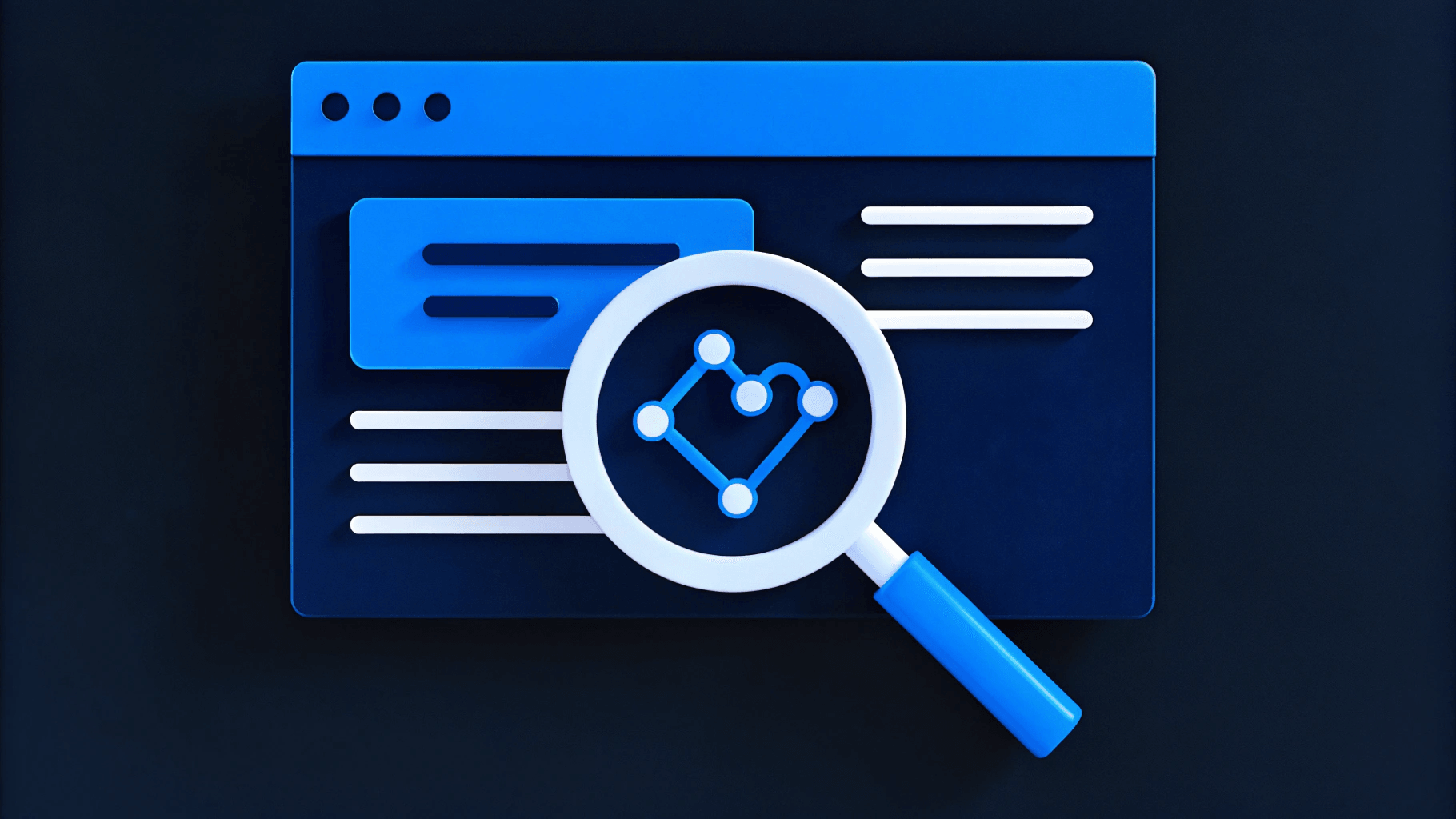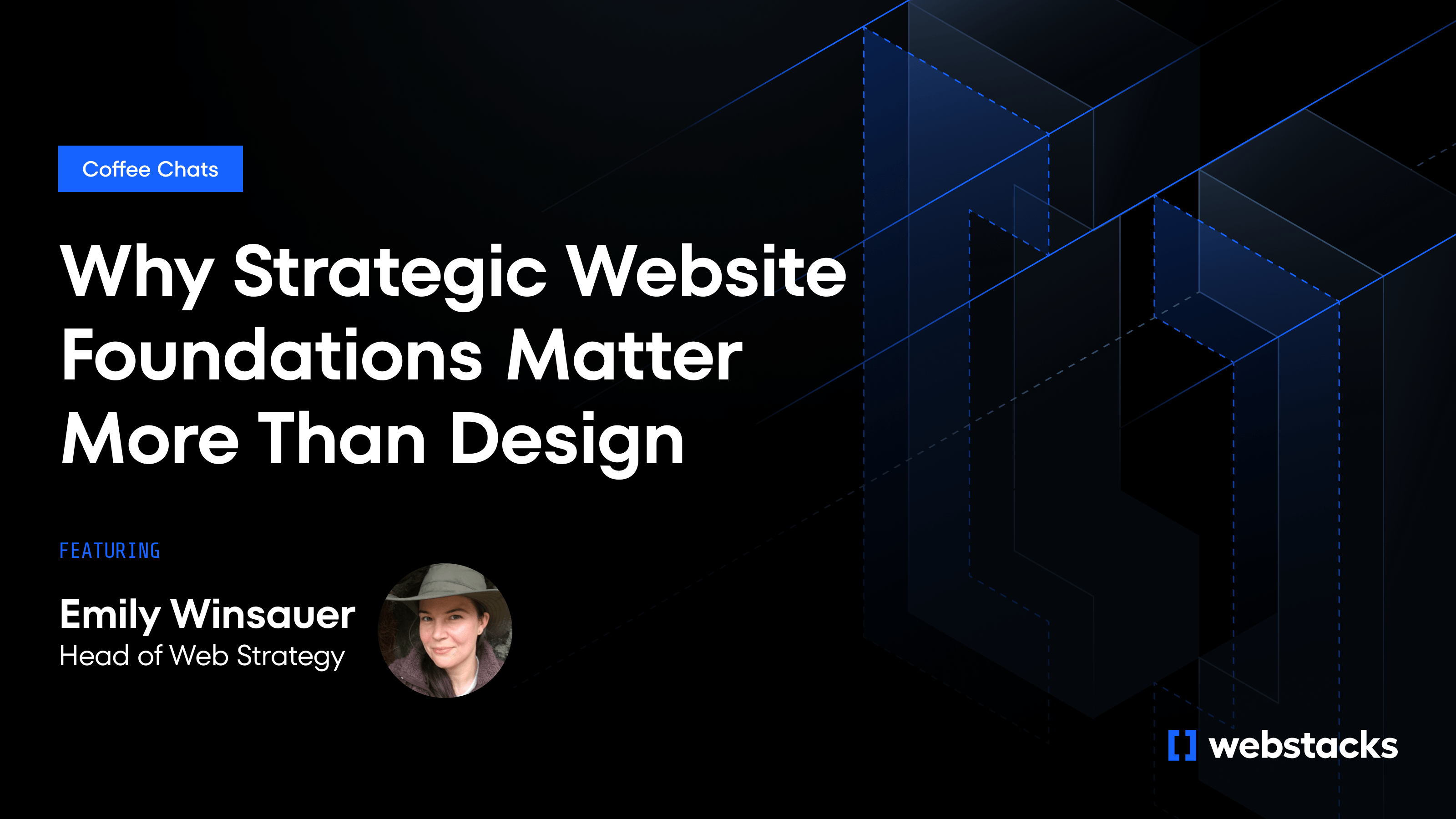B2B content teams face an impossible equation: volume demands are accelerating—more landing pages, more campaigns, more personalization across buyer journeys—but headcount isn't keeping pace. Marketing leaders need content that scales with growth, but traditional approaches force a choice between hiring more (unsustainable) or cutting corners (risky).
Most teams miss the real opportunity. AI can handle the repetitive, time-intensive work that bogs down editorial workflows—freeing editors to focus on strategy, brand integrity, and high-stakes decision-making. The question isn't whether to use AI, but how to implement it without sacrificing the quality standards that protect your brand.
Implementing AI editorial workflows isn't about replacing editors—it's about augmenting them. By automating repetitive processes and preserving human oversight where it matters most, content teams can achieve scalable, high-quality operations that grow without compromising brand voice or accuracy.
This guide walks through the practical steps for designing and implementing AI editorial workflows, from identifying automation opportunities to establishing governance frameworks that protect quality at scale.
Why AI Editorial Workflows Matter for B2B Content Operations
The strategic case for AI-augmented workflows comes down to a simple reality: content velocity directly impacts business outcomes, and manual-only processes can't keep up.
Content Volume Is No Longer Optional
B2B buyers expect personalized experiences across roles, industries, and buying stages. A VP of Marketing researching CRM platforms has different questions than a Sales Operations Manager evaluating the same tool. Your website needs content that speaks to both—and dozens of other personas.
Modern composable websites (headless CMS platforms, component libraries, modular architectures) enable rapid page creation. Marketing teams can launch landing pages, product pages, and campaign assets in days instead of months. But this technical capability only delivers ROI if content production keeps pace. Without scalable workflows, content becomes the bottleneck that limits website performance.
The Hidden Costs of Manual-Only Processes
Editors spend a large chunk of their time on repetitive tasks: formatting checks, SEO optimization, link validation, meta description writing, and content audits. This work is necessary—but it's not strategic. Time spent here is time not spent on messaging refinement, positioning development, or creative storytelling.
The result: slower campaign execution, inconsistent quality across pages, and burned-out teams. High-performing editors leave because they're stuck doing work that doesn't leverage their expertise. The content backlog grows while marketing opportunities slip by.
What AI Editorial Workflows Deliver
AI workflows address these pain points directly by automating low-value tasks while preserving editorial judgment where it matters most. The result is faster execution, better consistency, and teams that can focus on strategic work instead of administrative overhead.
- Faster content production without sacrificing quality. AI handles first drafts, SEO checks, and formatting—editors focus on refinement and approval.
- Consistent application of brand guidelines and SEO standards. AI doesn't forget style rules or skip optimization steps. Every piece gets the same thorough treatment.
- More time for strategic work. Editors spend less time on busywork and more time on messaging, stakeholder collaboration, and creative problem-solving.
- Scalable operations that grow with demand—not headcount. When marketing needs double the content output, AI workflows scale instantly. No hiring delays, no capacity constraints.
AI workflows don't eliminate editors—they eliminate the busywork that prevents editors from doing their best work. Teams that adopt AI thoughtfully can scale content operations without diluting brand voice or editorial standards.
Where AI Fits and Where It Doesn't in Editorial Workflows
The success of AI editorial workflows depends on understanding clear boundaries between AI-appropriate and human-essential tasks. Get this wrong, and you either automate too little (missing efficiency gains) or too much (compromising quality).
AI Excels at Repetitive, Rule-Based Tasks
AI delivers immediate value on high-volume work that follows predictable patterns. These tasks require consistency and thoroughness but not creative judgment or strategic insight.
- Content audits. AI can scan large content libraries to flag outdated statistics, broken links, missing metadata, or performance decay patterns. What takes a human team days or weeks happens in minutes. Editors review the findings and prioritize fixes—but AI does the heavy lifting of identification.
- SEO optimization. AI generates meta descriptions, suggests header structures, identifies keyword gaps, and recommends internal linking opportunities. These tasks require consistency and thoroughness—exactly what AI handles well. Editors review suggestions for tone and brand alignment, then approve.
- Format standardization. AI ensures consistent H-tag hierarchy, bullet formatting, paragraph length, and style guide compliance across hundreds of pages. Manual enforcement is tedious and error-prone. AI applies rules perfectly every time.
- Draft generation. AI creates first-draft outlines, FAQ expansions, or templated content based on structured inputs (topic, audience, key points, tone). These drafts aren't publication-ready—but they give editors a strong starting point instead of a blank page.
- QA checks. AI reviews content for readability scores, passive voice overuse, jargon density, and accessibility issues. It flags problems editors might miss during manual review, improving consistency and compliance.
Humans Own Strategy, Judgment, and Brand Voice
Tasks requiring editorial judgment should remain under human control. While AI can assist with these areas, final decisions demand market insight, creative thinking, and accountability that only humans can provide.
- Positioning and messaging. Decisions about how to talk about products, differentiate from competitors, or frame value propositions require market insight and strategic thinking. AI can generate options and variations, but editors must evaluate which approach aligns with competitive dynamics, customer psychology, and business objectives.
- Tone calibration. Ensuring content matches brand voice—especially in sensitive, high-stakes, or executive-facing contexts—requires nuance AI struggles to master consistently. A blog post and a customer case study might cover similar topics but demand different tones. AI can draft in approximate voice, but editors refine and approve to ensure precision.
- Strategic content decisions. Choosing which topics to cover, which customer stories to highlight, or how to sequence information requires an understanding of business priorities and audience needs that goes beyond pattern recognition. AI can suggest options based on data, but humans decide based on strategy.
- Stakeholder alignment. Negotiating priorities, managing feedback from product, sales, and leadership, and balancing cross-functional input requires interpersonal skills and organizational awareness. AI can't navigate company politics or mediate conflicting requests.
- Final approval and accountability. Publishing decisions—especially for customer-facing or revenue-critical content—require accountability that only humans can provide. Editors own the decision to publish and take responsibility for what goes live.
The Hybrid Model of AI and Human Collaboration
The most effective workflows combine AI automation with human oversight. This division of labor maximizes both efficiency and quality while protecting brand integrity.
AI handles the first pass—generating drafts, running audits, and suggesting optimizations. Humans review, refine, and approve—applying judgment, context, and brand expertise. Feedback loops continuously improve AI outputs based on editorial corrections.
This division of labor maximizes both efficiency and quality. AI eliminates bottlenecks. Humans ensure every piece meets brand standards and strategic objectives.
At Webstacks, we design content operations around this hybrid model. Our composable website architectures (Contentful, Sanity, modular component systems) are built to support AI-augmented workflows—enabling marketing teams to scale content production while maintaining governance and quality standards. By structuring content models and design systems for both human editors and AI tools, we help clients move faster without compromising brand integrity.
AI editorial workflows succeed when teams clearly define which tasks machines handle and which require human judgment. The goal isn't full automation—it's strategic augmentation that frees editors to focus on high-impact work.
A Step-by-Step Framework for Implementing AI Editorial Workflows
Implementing AI workflows requires a deliberate, phased approach. Moving too fast creates confusion and resistance. Moving too slowly means missing competitive advantages. This framework balances speed with stability.
1. Audit Your Current Editorial Process
You can't automate what you don't understand. Start by mapping your existing workflow to identify repetitive tasks and bottlenecks.
Document every step in your content lifecycle: ideation, brief creation, drafting, internal review, SEO optimization, legal or compliance review, publishing, performance monitoring, and content maintenance. Identify which steps consume the most editor time. Flag tasks that are repetitive, rule-based, or prone to human error.
Survey your team. Where do they feel overwhelmed? What tasks feel like busywork? Which parts of the workflow cause delays? These pain points are your best automation candidates.
Look for high-volume, low-complexity tasks like writing meta descriptions, running content audits, or formatting checks. Identify processes that require consistency but not creativity—style guide enforcement, link validation, readability scoring. Spot workflow gaps where content stalls while waiting for reviews, QA cycles, or approvals.
The outcome: a clear map of where AI can add value without disrupting editorial judgment or quality control.
2. Choose Your Automation Priorities
Trying to automate everything at once creates chaos. Start with high-impact, low-risk tasks that deliver immediate value and build team confidence.
Recommended starting points include content audits, SEO optimization, draft generation, and QA checks. These tasks are time-intensive but don't require strategic judgment, making them ideal candidates for AI automation.
- Content audits. Use AI to scan existing content for outdated information, broken links, SEO gaps, or performance decay. This delivers quick wins—editors spend hours, not days, on audits.
- SEO optimization. Automate meta description generation, keyword clustering, and internal linking suggestions. These tasks are time-intensive but low-stakes. Errors are easy to catch during review.
- Draft generation. Use AI to create first-draft outlines, FAQ answers, or blog introductions based on structured briefs. Editors still own messaging and tone—but they're refining, not starting from scratch.
- QA and compliance checks. Automate readability scoring, style guide enforcement, and accessibility reviews. These checks happen faster and more consistently than manual review.
Prioritize tasks that are time-intensive but don't require strategic judgment. Avoid automating high-stakes work like positioning, messaging, or final approvals until workflows mature. Choose tasks where errors are easy to catch and correct—drafts and suggestions rather than published content.
The outcome: a focused list of 2-3 workflows to pilot, with clear success metrics like time saved, error reduction, or content velocity improvement.
3. Select and Integrate AI Tools
The right tools must integrate seamlessly with your existing stack—CMS, project management platforms, collaboration tools—to avoid creating new silos or adding manual steps. Tool selection matters as much as workflow design.
Content Generation and Optimization Tools
These tools handle the creation, refinement, and optimization of content at various stages of the editorial process.
- Drafting, outlining, and content expansion: GPT-4, Claude, or Gemini
- SEO optimization and keyword analysis: Clearscope, Surfer SEO, or Frase
- Style, tone, and grammar checks at scale: Grammarly Business or ProWritingAid
Content Management and Workflow Automation Platforms
These platforms manage content storage, enable non-technical teams to update pages, and automate repetitive workflows across your content operations.
- AI-ready headless CMS: Contentful, Sanity, or other platforms with robust APIs
- Workflow automation (triggering AI audits, content updates): Zapier, Make, or n8n
- Content planning and brief generation with AI assistance: Notion AI or Airtable
Analysis and Auditing Tools
These tools identify performance issues, content gaps, and technical problems across your content library at scale.
- Large-scale content audits: Custom GPT prompts or LangChain workflows
- Content decay and performance gap identification: GA4 combined with AI analysis tools
- Technical SEO and site health monitoring: Screaming Frog plus AI
Integration requirements matter as much as tool capabilities. Tools must connect to your CMS via API or native integrations. Outputs should feed directly into existing workflows—not require manual copy-paste between systems. Teams must be able to review and approve AI outputs before publishing.
Webstacks specializes in building AI-ready content infrastructures. Our headless CMS implementations (Contentful, Sanity) include structured content models, API-first architectures, and component libraries designed to support AI workflows from day one. This means AI tools can seamlessly generate, optimize, and audit content within the same system marketing teams use daily—eliminating silos and accelerating execution.
The outcome: a tech stack that enables AI workflows without disrupting existing processes or requiring extensive team retraining.
4. Establish Governance and Quality Controls
AI without governance creates risks that include brand inconsistencies, factual errors, and content that undermines trust. Quality controls ensure AI accelerates work without compromising standards.
Define AI Boundaries Clearly
Document which tasks AI can handle autonomously, which require human review, and which should never be automated. Clear boundaries prevent quality issues and ensure accountability remains with the right people.
- AI can handle autonomously: content audits, SEO suggestions
- Human review required: drafts, meta descriptions, internal linking recommendations
- AI should never touch: final approvals, sensitive content, brand positioning decisions
Create Review Protocols With Clear Checkpoints
Establish where humans validate AI outputs. Structured review processes catch errors before they reach publication and create opportunities to improve AI performance over time.
- Use tiered review: junior editors check formatting and SEO compliance; senior editors review messaging and tone
- Build feedback loops that track common AI errors
- Use this data to refine prompts or tool configurations
Maintain Brand Voice and Accuracy Through Human Oversight
Ensure AI supports rather than replaces editorial judgment. Human editors remain responsible for tone, consistency, and factual accuracy across all content.
- Train AI tools on brand guidelines, approved messaging frameworks, and style preferences
- Use human editors to calibrate tone, refine word choice, and ensure consistency
- Require fact-checking for all AI-generated claims, statistics, or case study references
- Never publish AI-generated content without human verification
Monitor and Iterate Continuously
Track quality metrics and adjust based on performance. Regular monitoring ensures AI workflows improve over time rather than creating new problems.
- Monitor error rates, time saved, and editor satisfaction scores
- Adjust workflows based on team feedback and performance data
- Continuously refine AI prompts and tool configurations to improve output quality
The outcome: a governance model that protects brand integrity while enabling teams to scale content operations confidently.
5. Train Your Team and Build Feedback Loops
AI tools only deliver value if teams know how to use them effectively. Training and feedback loops ensure adoption, refinement, and continuous improvement.
Provide Comprehensive Training
Equip your team with the skills they need to use AI tools effectively. Focus on hands-on learning, role-specific guidance, and documentation that supports long-term independence.
- Conduct hands-on workshops showing editors how to prompt AI tools, review outputs critically, and integrate suggestions into their workflow
- Provide role-specific guidance: strategists need to know how to write effective briefs for AI; editors need to know how to refine AI drafts efficiently
- Document best practices for common use cases: running audits, generating drafts, optimizing for SEO
Design Feedback Loops That Support Continuous Improvement
Create systems that help teams learn and improve over time. Regular feedback and data tracking ensure AI workflows evolve based on real-world performance.
- Hold weekly check-ins to gather team input on what's working and what needs adjustment
- Track corrections by monitoring how often editors override or refine AI outputs, then use this data to improve prompts and tool settings
- Celebrate wins by sharing examples where AI accelerated delivery or improved quality
Webstacks doesn't just build websites—we train client teams to manage them. Our Website Product Teams include strategic onboarding and enablement, ensuring marketing teams understand how to use AI tools within their composable CMS environments. This hands-on support accelerates adoption and maximizes ROI from both the website infrastructure and the AI workflows it enables.
The outcome: a confident, skilled team that uses AI as a force multiplier—not a replacement.
By following this framework, content teams can implement AI workflows incrementally, minimizing disruption while maximizing impact. The result: scalable content operations that grow with demand, not headcount.
Measuring Success with KPIs for AI Editorial Workflows
Defining clear metrics demonstrates ROI and guides continuous improvement. Track both efficiency gains and quality maintenance to ensure scalability doesn't compromise editorial standards.
Efficiency Metrics
These metrics quantify how AI workflows reduce time spent on repetitive tasks and accelerate content production cycles. They provide concrete evidence of productivity gains and help justify continued investment in AI tools.
- Time to publish measures how long content moves from brief to live. Compare timelines before and after AI implementation to quantify acceleration.
- Editor hours saved tracks time spent on repetitive tasks (audits, SEO checks, formatting) versus strategic work (messaging, positioning, stakeholder collaboration). This metric shows whether AI is genuinely freeing editors for high-value work.
- Content velocity counts pieces published per month or quarter. Increased output without increased headcount proves scalability.
Quality Metrics
These metrics ensure AI workflows maintain or improve content standards rather than compromising them for speed. Without quality tracking, efficiency gains can mask declining content effectiveness that undermines long-term business goals.
- Error rates monitor factual errors, broken links, or style guide violations in published content. If AI workflows increase errors, adjustments are needed.
- Brand consistency scores use qualitative reviews to assess tone, messaging alignment, and brand voice adherence. Regular spot-checks ensure AI isn't diluting brand identity.
- SEO performance tracks keyword rankings, organic traffic, and engagement metrics for AI-optimized content versus manual-only content. This proves whether AI optimization delivers real results.
Team Satisfaction
These metrics gauge whether AI workflows improve team morale and adoption rather than creating frustration or resistance. Strong tools poorly received by teams won't deliver sustained value, making satisfaction metrics critical to long-term success.
- Editor sentiment surveys measure workload perception, tool usability, and job satisfaction. If editors feel more stressed or less valued after AI implementation, workflows need refinement.
- Adoption rates track how frequently editors use AI tools and where they find them most valuable. Low adoption signals training gaps or tool selection problems.
Business Impact
These metrics connect content operations improvements to revenue outcomes and strategic business goals. Efficiency and quality matter only if they translate into measurable business results that justify the investment in AI workflows.
- Lead generation ties content production increases to pipeline growth, demo requests, or conversion lift. Content operations should drive revenue, not just volume.
- Website performance monitors how fast content velocity supports marketing campaigns, product launches, or SEO initiatives. Scalable content should enable faster execution across all marketing functions.
Review metrics quarterly to identify bottlenecks, refine workflows, and adjust AI tool configurations. Use feedback loops to evolve prompts, governance protocols, and training programs.
Measuring success ensures AI workflows deliver real value—not just novelty. Track both efficiency and quality to prove scalability works.
What This Looks Like in Practice
A realistic example makes the framework tangible. Consider a SaaS content team scaling blog production to support growth.
Before AI Workflows
The team publishes 4 blogs per month. Editors spend 60% of their time on formatting, SEO checks, and meta description writing. Content audits happen twice a year—manually, using spreadsheets and taking days to complete. The backlog holds 30+ blog ideas, but the team lacks bandwidth to execute.
After Implementing AI Workflows
The team implements AI workflows across four key areas, transforming how content moves from planning to publication:
- Content audits run monthly. AI scans the blog library, flagging outdated statistics, broken links, and keyword gaps. An editor reviews findings in 30 minutes instead of 8 hours. High-priority updates get scheduled immediately.
- SEO optimization accelerates. AI generates meta descriptions, suggests internal links, and identifies keyword opportunities for each post. Editors refine tone and approve suggestions in 10 minutes per post instead of 45 minutes of manual work.
- Draft generation speeds up writing. AI creates first-draft outlines based on structured briefs (topic, target audience, key points, desired tone). Editors rewrite introductions and conclusions, add specific examples, and inject brand voice. What used to take 4 hours now takes 2.
- QA checks catch more issues. AI flags readability problems, passive voice overuse, and style guide violations. Editors review and correct issues during the final pass, improving consistency across all content.
Results
Blog production increases with the same team size. Editor time spent on repetitive tasks drops, and content quality improves: fewer errors reach publication, SEO performance strengthens, and tone consistency increases. Team satisfaction rises because editors focus on strategy, storytelling, and creativity instead of administrative work.
AI workflows don't eliminate editors—they eliminate the bottlenecks that prevent editors from doing their best work. The result is faster, better, more scalable content operations.
Build Content Operations That Scale With Your Business
The gap between content demand and content capacity is widening. Marketing teams face pressure to personalize experiences, support more campaigns, and feed multiple channels—while headcount stays flat. Teams that solve this first will dominate search visibility and own buyer mindshare across critical touchpoints.
AI editorial workflows enable scalable content operations by automating repetitive tasks while preserving human judgment where it matters most. Teams that implement AI thoughtfully can scale content velocity without compromising brand voice or editorial standards. This isn't just efficiency—it's the ability to execute ambitious content strategies that directly support revenue goals.
But AI workflows only deliver results when the underlying infrastructure supports them. Without structured content models, API-first architectures, and composable systems designed for AI integration, tools become bolt-on solutions that create more friction than they eliminate.
At Webstacks, we design websites and content operations for scale. Our composable architectures (headless CMS, modular component systems, API-first design) support AI-augmented workflows from day one—enabling marketing teams to move faster, publish more, and maintain quality standards as they grow. We pair technical infrastructure with operational enablement to help B2B SaaS teams build content engines that compound in value over time.
If your content operations are struggling to keep pace with business demands, the solution isn't hiring more people. It's building the infrastructure and workflows that let your existing team operate at 2-3x their current capacity.
Talk to Webstacks about building AI-ready website infrastructures that enable faster, smarter, and more scalable content production.




